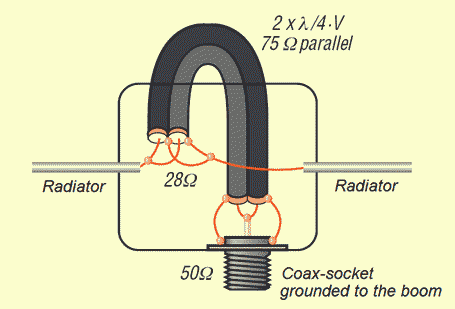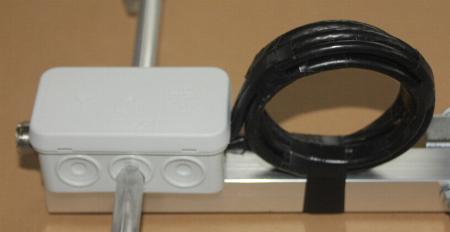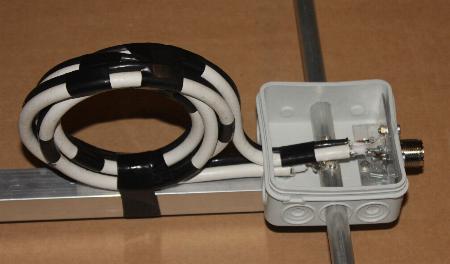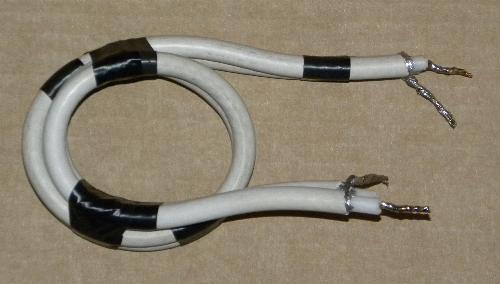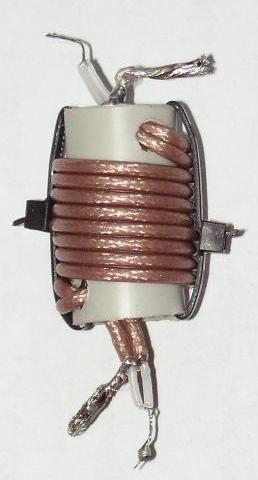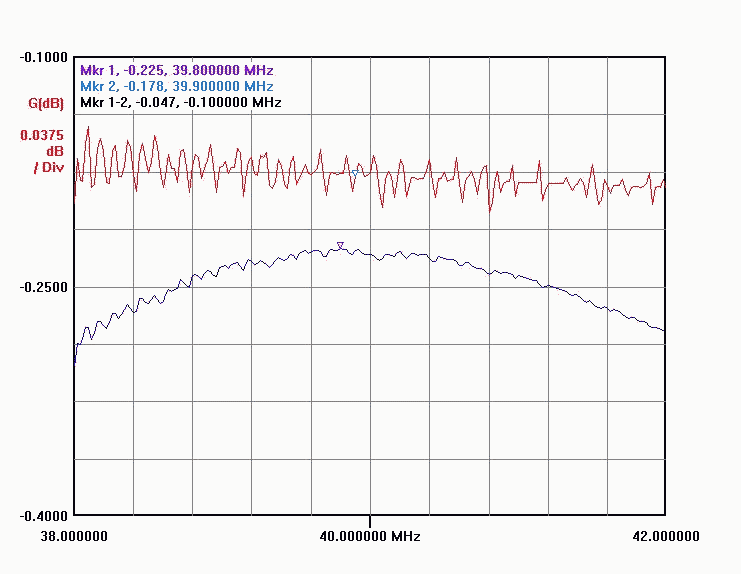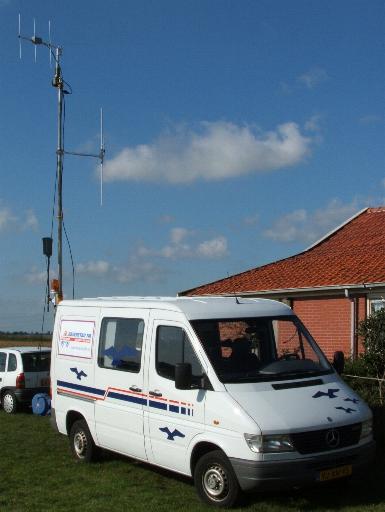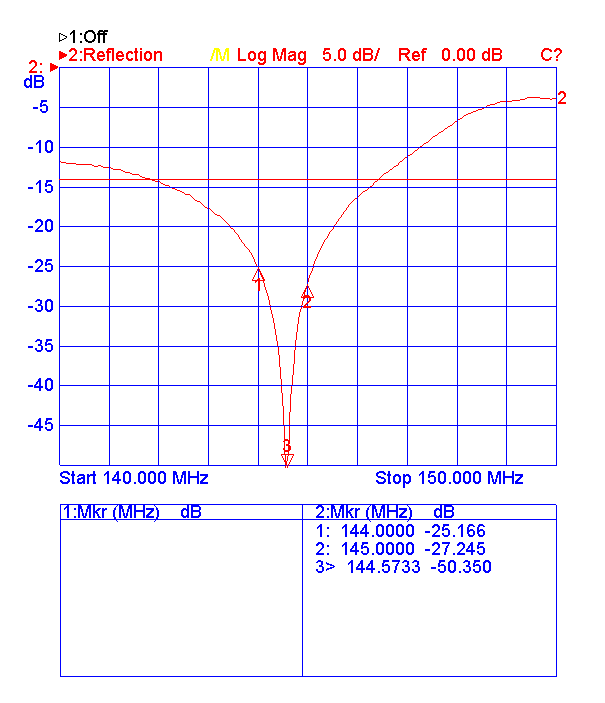|
It is a well known phenomenon, that the
radiators resistance in a Yagi-structure drops down by adding parasitic elements
to a dipole as a radiating element.
For the VHF-Bands (50-50.5MHz, 144-146MHz, 430-440MHz) a radiation resistance of
25-35Ohm has the best balance for gain,
back- and sidelobes, bandwidth and SWR at tenable losses in a Yagi.
The classic match for that resistance/impedance
is
the Gamma-Match. The Beta-Match is a good choice as well, but realisation on VHF is
difficult for homebrewing. For that reason a new simple, easy to built match was
developed in 1995 for Yagis with resistitive loads of 12.5, 18 and 28 Ohm.
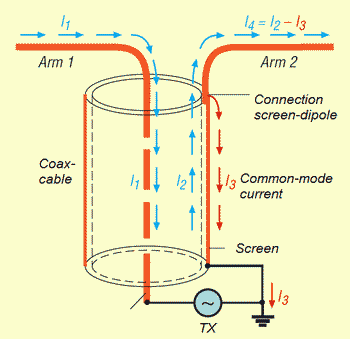 |
To understand how the "DK7ZB-Match"
works look at the left picture. Inside the coax cable we have
two currents I1 and I2 with the same amount but with a phase
shift of 180°.
If we connect a dipole or the radiator of a Yagi direct to
the coax, a part of I2 is not running to the arm 2 but down the
outer part of the coax shield. Therefore I1 and I4 are not in
balance and the dipole is fed asymmetric.
But how can we suppress the common-mode current I3? A
simple solution is to ground the outer shield in a distance of
lambda/4 at the peak of the current.
But now we get a new interesting problem: For the
transformation 28/50 Ohm we need a quarterwave piece of coax
with an impedance of 37,5 Ohm (2x75 Ohm parallel). The velocity
of the wave inside the coax is lower than outside (VF = 0,667
for PE). |
| The outside of the shield has air
(and a litle bit of insulation) in the surrounding and VF =
0,97. For grounding the common mode currents this piece should
have a length of 50 cm, with a VF = 0,667 and a length of 34,5
cm this piece of coax is to short. By making a loop of this two
cables as shown in the picture down we get an additional
inductivity and we come closer to an electrical length
of lambda/4. Ideal is coax cable with foam-PE and a VF =
0,82.
With a good grounding of the coax socket to the
boom in practise no common mode currents are on the coax
cable and the antenna has a symmetrical pattern! |
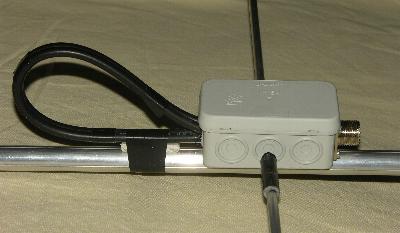 |
|
Important hint:
The 2x75-Ohm-coax-cables (or 2x50-Ohm) for the match
28/50 Ohm (or 12,5/50 Ohm) must be absolutely parallel. If you mount them above the boom, take a
piece of insulated material (uncritical) of 5 mm thickness between the cables
and the boom.The high voltage at power >300W RF can cause a short circuit or
arcing between screen and boom! This mounting avoids stray capacities
against the boom, too.
|
|
|


